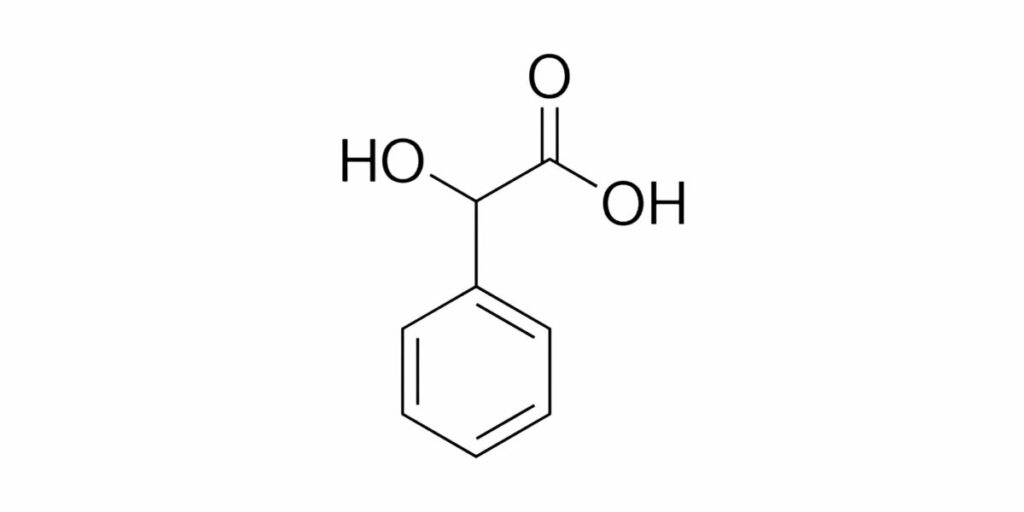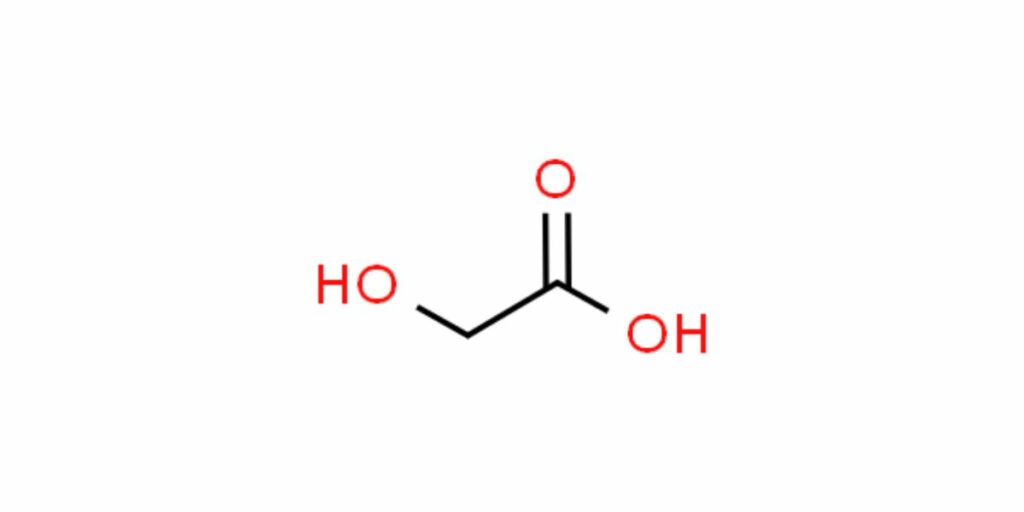If you’re interested in using chemical exfoliants to improve the texture and appearance of your skin, you may be wondering which of these two acids, mandelic acid vs lactic acid, is the best choice. In this post, we’ll explore the difference between Mandelic acids and lactic acids, and help you decide if glycolic acid or lactic acid is the best fit for your skincare routine.
Mandelic acid is a derivative of bitter almonds, while lactic acid is from milk. Both of these acids are AHAs, which means they work by exfoliating the top layer of skin to reveal smoother, healthier skin underneath. However, there are some key differences between the two that make them better suitable for different skin concerns and types.
We’ll delve into the specifics of each acid, including its strengths and weaknesses, so you can make an informed decision about which one is right for you. Whether you have sensitive skin, acne-prone skin, fine lines, and wrinkles, or just want to improve the overall appearance of your skin, we’ll help you find the perfect acid for your needs. So let’s dive in and find out if Mandelic acid is best when compared to lactic acid!
Mandelic acid
Jump To:

Mandelic acid is an alpha hydroxy acid (AHA) that is a derivative of almonds. It is commonly used in skincare products as a chemical exfoliant to help improve the texture and appearance of the skin. Removes the top layers of dead skin cells, which helps to unclog pores and smooth the skin. Also has antimicrobial properties, which make it effective at fighting acne-causing bacteria.
It is generally gentle and suitable for all skin types, including sensitive skin. Often used as an alternative to glycolic acid, which is another popular AHA, for people with sensitive skin or who are new to using AHAs. It is available in a variety of skincare products, including cleansers, toners, serums, and peels.
What skin type is Mandelic acid best for?
Mandelic acid is generally suitable for all skin types, including sensitive skin. It is thought to be less irritating than other AHAs, such as glycolic acid, which makes it a good choice for people with sensitive or reactive skin. It is also thought to have antibacterial properties, which may make it beneficial for people with acne-prone skin.
As with any skin care product, it is important to use mandelic acid in the appropriate concentration and to follow the instructions on the product label. It is also a good idea to start with a lower concentration and gradually increase it as your skin becomes accustomed to the product.
Lactic acid

Lactic acid contains sodium lactate. It is a compound that is present in many living organisms and is involved in a variety of biological processes. It is a carboxylic acid with the chemical formula C3H6O3. Lactic acid is produced by the body during the metabolism of carbohydrates, and it is also found in fermented foods such as pickles, sauerkraut, and yogurt.
In the body, lactic acid is produced during times of high energy demand, such as during exercise. It is produced when the body is unable to get enough oxygen to meet its energy needs, and it is converted into a source of energy through a process called anaerobic respiration. This process results in the production of lactic acid, which can then be converted back into energy by the body.
Lactic acid has a number of uses in various industries, including the food and pharmaceutical industries. It is used as a food preservative, as a flavoring agent, and as a pH-adjusting agent. In the pharmaceutical industry, it is used as a sterilizing agent and as a component of certain medications. It is also used in the cosmetics industry as an exfoliant and skin-lightening agent.
What skin type is lactic acid best for?
Lactic acid is generally suitable for all skin types, including sensitive skin. However, it is important to use it in the appropriate concentration and to follow the instructions on the product label. It is also a good idea to start with a lower-concentration serum and gradually increase it as your skin becomes accustomed to the product.
It is always a good idea to patch-test if you buy a new product before using it on your face, especially if you have sensitive skin or are using a higher concentration of lactic acid. To do a patch test, apply a small amount of the product to a discreet area of skin, such as the inner arm or behind the ear, and wait 24-48 hours to see if there is any reaction. If you experience redness, itching, or other irritation, you should stop using the product.
It is also important to use a broad-spectrum sunscreen when using lactic acid, as AHAs can increase the skin’s sensitivity to the sun. Wearing sunscreen can help prevent sunburn and other sun-related damage to the skin.
What are the benefits of alpha hydroxy acids(AHAs) over beta hydroxy acids(BHAs)?
Alpha hydroxy acids (AHAs) and beta hydroxy acids (BHAs) are both types of exfoliants that are commonly used in skincare products. Both AHAs and BHAs can help improve the texture and tone of the skin, reduce the appearance of fine lines and wrinkles, and unclog pores. However, there are some differences between the two types of acids.
AHAs are water-soluble acids that are derived from fruit and milk sugars. They work by exfoliating the top layer of the skin, which can improve the appearance of rough or uneven skin and promote the growth of new, healthy skin cells. AHAs are generally considered to be suitable for all skin types, including sensitive skin, and are effective at improving the appearance of fine lines, uneven skin tone, wrinkles, and sun damage.

BHAs, on the other hand, are oil-soluble acids that are derived from salicylic acid. They work by exfoliating inside the pore, which can help to unclog pores and reduce the appearance of acne and blackheads. BHAs are generally considered to be more suitable for oil or acne-prone skin, as they can penetrate deeper into the pores to clear out excess oil and dead skin cells.
In general, AHAs are more effective at improving the appearance of surface-level skin concerns, such as uneven skin tone and fine lines, while BHAs are more effective at improving the appearance of deeper, pore-related concerns, such as acne and blackheads. It is important to choose the right type of acid for your skin type and concerns and to follow the instructions on the product label to ensure that you are using the product safely and effectively.
How to use Mandelic Acid and Lactic Acid in a skincare regimen?
Both Mandelic acid and lactic acid can be found in a variety of skincare products, including serums, toners, and peels. When using either of these acids, it’s important to follow the instructions on the product label and start with a lower concentration if you have sensitive skin.
Here are some general guidelines for using Mandelic acid and lactic acid while incorporating them into a skincare regimen:
Mandelic acid:
- Start with a lower concentration (around 10-15%) and gradually increase the strength as your skin becomes more accustomed to the acid.
- It can be used once/twice a week, depending on the strength of the product and your skin’s tolerance.
- Apply the acid to clean, dry skin and follow with a moisturizer.
- Avoid using it if you’re pregnant or breastfeeding.
Lactic acid:
- Lactic acid is generally less irritating than other AHAs, so it can be used more frequently (up to every other day).
- Start with a lower concentration (around 5-10%) and gradually increase the strength as your skin becomes more accustomed to the acid.
- Apply the acid to clean, dry skin and follow with a moisturizer.
- Avoid using lactic acid if you’re pregnant/breastfeeding.
It’s important to note that both of these acids can increase your skin’s sensitivity to the sun, so it’s essential to use a broad-spectrum sunscreen with an SPF of 30 or higher when using these acids. Additionally, you should avoid using other exfoliating agents (such as physical exfoliants like scrubs) and harsh, drying skincare products when using lactic acid/mandelic acid
Mandelic Acid vs Lactic Acid: Which is best for acne?
Both mandelic acid and lactic acid are AHAs that are for exfoliating properties in skincare. Mandelic acid can be effective in improving the appearance of acne, but which one is better for you will depend on your individual skin type and the specific concerns you have. lactic acid is larger than glycolic and generally causes fewer side effects.
Mandelic acid, which is from almonds and has a larger molecule size than other AHAs, such as glycolic acid. This can make it less irritating to the skin and more suitable for those with sensitive or reactive skin. It can help to exfoliate the skin, unclog pores, and improve the appearance of acne scars. It may also have some antibacterial properties and may be effective at reducing inflammation.

Lactic acid, on the other hand, is from milk and has a smaller molecule size than mandelic acid. It is more effective at exfoliating the skin and may be more suitable for those with more resilient or thicker skin. Lactic acid can help to improve the texture and tone of the skin and may also have some antibacterial and anti-inflammatory properties.
In general, mandelic acid and lactic acid can be effective at improving the appearance of acne, but the best choice for you will depend on your individual skin type and concerns. It is always a good idea to speak with a dermatologist or a skincare professional to determine which beauty products and ingredients are most suitable for your skin. They can help you to create a skincare routine for your specific needs and goals.
Wrapping up
In conclusion, Mandelic acid and lactic acid are both effective AHAs that can improve the texture and appearance of your skin by exfoliating the top layer of the skin. However, there are some key differences between the two that make them better suitable for different skin concerns and types.
Mandelic acid is a larger molecule than lactic acid, which makes it less irritating and more suitable for sensitive skin. It’s also effective at treating acne and hyperpigmentation. Lactic acid, on the other hand, is a smaller molecule that can penetrate the skin more deeply, making it more effective at exfoliating and improving the appearance of fine lines and wrinkles. However, it may be more irritating for those with sensitive skin.
Ultimately, the best acid for you will depend on your skin concerns and type. If you have sensitive skin, Mandelic acid may be the better choice. If you’re looking to improve the appearance of fine lines, lactic acid may be more effective. It’s always a good idea to start with a lower concentration of the acid and gradually increase the strength as your skin becomes more accustomed to it. And remember to use a broad-spectrum sunscreen with an SPF of 30 or higher when using these acids to protect your skin from the sun’s harmful UV rays.
This is all there is to Mandelic acid and lactic acid. Hopefully, this post answered all your queries.
